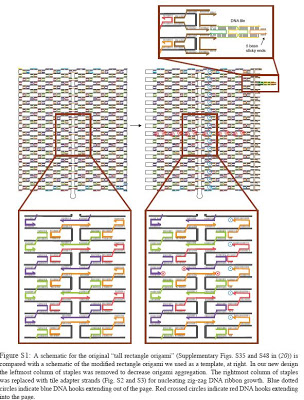Self-assembly of carbon nanotubes into two-dimensional geometries using DNA origami templates
Nature Nanotechnology: Self-assembly of carbon nanotubes into two-dimensional geometries using DNA origami templates A central challenge in nanotechnology is the parallel fabrication of complex geometries for nanodevices. Here we report a general method for arranging single-walled carbon nanotubes in two dimensions using DNA origami—a technique in which a long single strand of DNA is folded …






